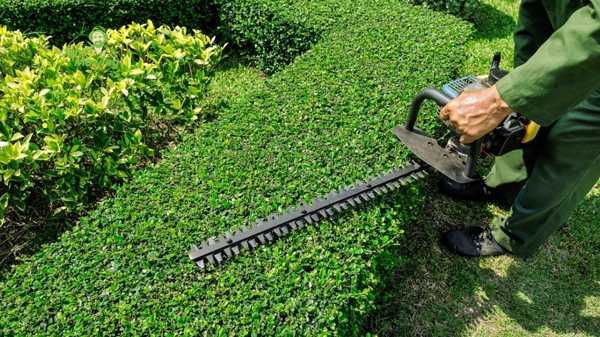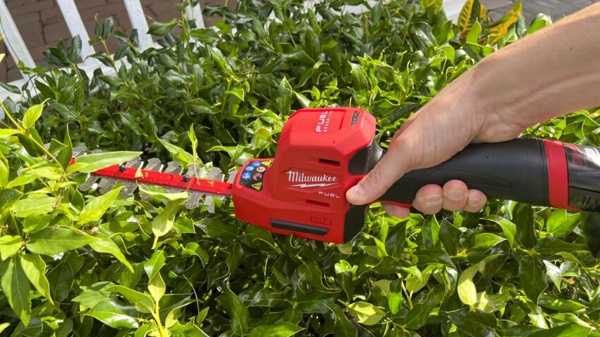How to Choose and Use a Hedge Trimmer
Discover how to choose and use a hedge trimmer effectively! This guide covers types, features, and techniques to help you maintain a healthy, attractive garden.
In garden maintenance, trimming hedges is not merely a task; it's an essential practice that profoundly influences the aesthetics and health of any outdoor space. Whether you are an experienced gardener or a novice eager to hone your skills, mastering the art of hedge trimming is paramount for transforming your garden. A well-trimmed hedge not only serves as a natural privacy barrier and defines your space but also significantly enhances the beauty of your property. This article thoroughly examines the crucial aspects of selecting the right hedge trimmer, exploring various options available to gardeners and detailing the specific requirements each type fulfils.
Additionally, you will find practical tips on effective trimming techniques, ensuring you handle your tools like a seasoned professional. Understanding the right tools and techniques can lead to healthier plants and a more visually appealing garden. By following this comprehensive guide, you'll be equipped to confidently elevate your outdoor space, sidestepping common mistakes and maximizing your results. Join us on this journey to cultivating a pristine garden that mirrors your style, beginning with the fundamental skill of hedge trimming.

Types of Hedge Trimmers
Hedge trimmers can be categorized into three main types: Manual, Electric, and Gas-powered. Each type serves a specific purpose and caters to various user preferences; thus, understanding their differences is crucial for making an informed choice.
Manual Hedge Trimmers
Manual hedge trimmers resemble large scissors and rely on the gardener's strength to operate. They are lightweight, quiet, and do not require a power source, making them ideal for small tasks or areas where noise is a concern. However, they may be labour-intensive and less efficient for larger projects.
Electric Hedge Trimmers
Electric hedge trimmers come in corded and cordless varieties. Corded models provide uninterrupted power, making them suitable for extensive trimming tasks, but they necessitate proximity to a power outlet and can be cumbersome due to extension cords. In contrast, cordless models operate on rechargeable batteries, offering greater mobility and convenience without cord limitations. However, they may lack the power for heavy-duty tasks or run out of battery mid-use.
Gas-powered Hedge Trimmers
Gas-powered trimmers deliver substantial power and are designed for professional landscaping duties or larger gardens. While they are more powerful, they are also heavier, require more upkeep, and can create noise and emissions that may not be suitable for residential areas. Each hedge trimmer type presents distinct benefits and drawbacks. Hence, it's imperative to choose one that aligns with your gardening needs and preferences.
Choosing the Right Hedge Trimmer
Assessing Your Needs
When selecting a hedge trimmer, the first step is to evaluate your requirements based on the size of your garden and the specific type of hedges you maintain. If your garden is compact and features only a handful of shrubs, a lightweight and compact hedge trimmer will suffice. Such tools are easier to manoeuvre, particularly for nuanced shaping tasks. In contrast, you might consider a more powerful option for medium to large gardens containing taller or denser hedges, such as a gas-powered trimmer, which offers enhanced capability and endurance. Furthermore, understanding the hedge varieties you will be addressing is crucial, as deciduous hedges generally require more vigorous trimming than their evergreen counterparts.
Key Features to Look For

Before proceeding with a purchase, several critical features should be considered to enhance the efficiency and comfort of your hedge-trimming experience. The blade's length is important; longer blades can cover more area efficiently but may be cumbersome. Selecting a blade length corresponding to your hedge types and sizes is essential. The blade type is equally significant, with dual-action blades minimizing vibrations and improving cutting efficiency. The trimmer's weight and ergonomic design should also be priorities, as a lightweight model with an ergonomic grip can alleviate fatigue during prolonged use. For cordless gadgets, battery longevity is vital; it's advisable to opt for models that offer sufficient runtime to complete the trimming session without frequent interruptions. Lastly, always prioritize indispensable safety features like blade guards and switches to protect yourself while working.
Budget Considerations
Hedge trimmers are available at a wide range of prices; thus, being aware of your budget is integral. Entry-level electric models typically cost approximately $40 to $80, providing basic functionality for small gardens. Mid-range options, generally priced between $100 to $200, offer improved features such as advanced blade technology and superior battery life. For professional-grade or heavy-duty gas models, prices can range from $200 to over $500. Brands like Black+Decker and Ryobi deliver reliable choices for budget-conscious gardeners, whereas premium brands like Stihl or Husqvarna cater to the professional landscaping market. Factoring in your garden trimming frequency and extent of trimming needs is vital to invest in a hedge trimmer that meets your specific conditions.
How to Use a Hedge Trimmer Safely and Effectively
Preparations Before Trimming
Safety should take precedence when using a hedge trimmer. Before you commence, ensure you don proper safety gear. Commence with resilient gloves to safeguard your hands from potential cuts. Eye protection is crucial; goggles or safety glasses shield your eyes from debris that might spring upwards during trimming. Additionally, consider using ear protection to reduce noise exposure, especially when handling gas-powered models.
Before starting your trimming tasks, clearing the workspace of any obstruction or debris is imperative. Inspect for stones, branches, and other objects that could pose safety hazards or damage your trimmer. A clean working area enhances safety and allows you to trim more efficiently.
Trimming Techniques
Mastering the correct techniques is essential when trimming hedges. Maintain a steady grip on the trimmer as you shape the hedge to your desired height. Ideally, position yourself at ground level, aligning your gaze with the height you intend to achieve instead of trying to estimate from above.
To effectively shape hedges, trimming from the top and transitioning to the sides, maintaining a consistent angle. Employ the "topping" technique for top-heavy hedges; this requires cutting the top slightly shorter than the sides, promoting thicker growth at the base. Regularly stepping back to evaluate symmetry can help to prevent uneven shapes.
Maintaining good posture during trimming is essential for optimal performance. Stand with your feet shoulder-width apart for stability, and resist the urge to extend your arms too far, contributing to fatigue and compromised control.
Aftercare and Maintenance
Properly cleaning and storing your hedge trimmer after the trimming session is vital for prolonging its lifespan. Wipe the blade to remove contaminants such as sap or dirt, as they can impair performance over time. Always unplug the device before cleaning for electric trimmers to mitigate accidental starts.
Routine maintenance remains paramount. Inspect blades for potential damage and lubricate them regularly to ensure smooth function. Storing the trimmer in a dry environment can protect against rust and deterioration of electrical components. Adhering to these care practices guarantees that your hedge trimmer remains in prime condition for future tasks.
Common Mistakes to Avoid

Gardeners frequently make common mistakes when using hedge trimmers, leading to substandard results and potential plant harm. One prevalent error is improper trimming techniques, wherein users often create uneven cuts by neglecting the natural contour of the hedge, resulting in an unnatural and patchy appearance. Visualizing the intended shape beforehand and maintaining a steady angle with the trimmer for the best results is vital.
Another common pitfall involves trimming during inappropriate seasonal periods. Gardeners might feel compelled to prune their hedges too early in the spring or late in autumn, damaging new growth and detracting from foliage during flowering seasons. Trimming should be executed according to plant species-specific needs; for instance, deciduous shrubs are generally pruned in late winter, while flowering shrubs require different timings based on their blooming cycles.
Moreover, overlooking proper maintenance for hedge trimmers can compound mistakes. Dull blades tend to tear rather than cut, producing jagged edges that are more susceptible to disease. Ensuring blades are adequately sharpened, and the equipment remains clean can significantly enhance the quality of your trimming.
By avoiding these common mishaps and embracing correct techniques, timing, and equipment care, gardeners can achieve robust and visually pleasing hedges. This not only leads to a more organized garden view but also fosters plant health, allowing for lush growth and vivid blooms. Successful trimming relies on these foundational practices, ensuring that gardeners and their plant life flourish.
Embracing the Art of Hedge Trimming
In summary, choosing the right hedge trimmer and applying proper techniques are pivotal for any gardener aiming to maintain beautiful hedges. This guide has unveiled numerous facets of hedge trimming, from recognizing various trimmer types to mastering safe practices and maintenance routines. Remember, routine hedge trimming enhances the visual allure of your garden and fortifies plant health by fostering growth and preventing disease. As you apply these insights, you will witness a significant transformation in your outdoor space, crafted precisely to reflect your vision. Approach the art of hedge trimming with confidence and creativity, empowering your garden to flourish like never before. Every trim moves you closer to achieving your gardening aspirations, so gather your tools and embark on your gardening journey today!
Take pride in your efforts, savor the process, and watch your outdoor space thrive under your careful attention!







